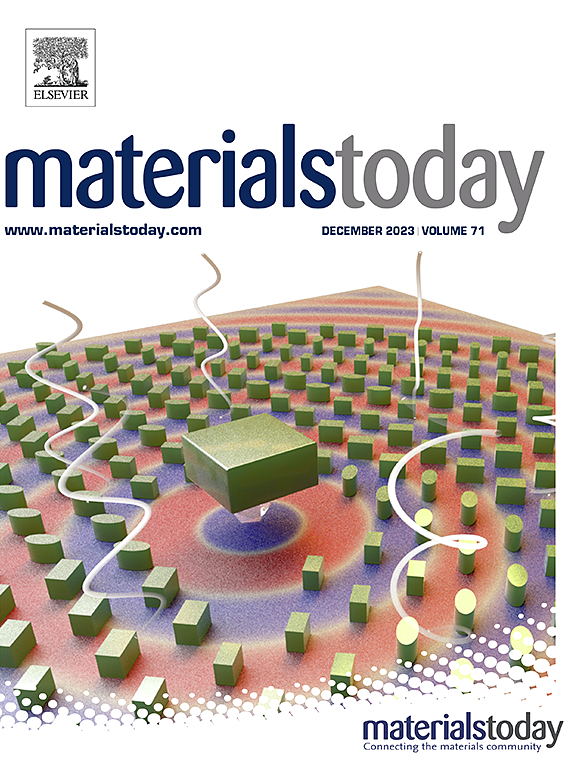Advances in organoid-on-a-chip for recapitulation of human physiological events
IF 21.1
1区 材料科学
Q1 MATERIALS SCIENCE, MULTIDISCIPLINARY
引用次数: 0
Abstract
The transition to 3D cell culture has garnered attention because it offers accurate information for the development of new drugs, drug disease modeling, cancer treatment, and personalized medicine research, which is important for providing human-like physiological environment-mimicked in vivo models by replacing conventional cell culture systems. In particular, organoids form complex structures of various organs derived from stem cells that involve the convergence of diverse heterogeneous technologies to imitate a more accurate internal body environment. In this review, we discuss trends in organoid-on-a-chip, which can precisely mimic organ-specific functions and disease mechanisms by providing real-time controllable dynamic culture environments by combining organoid culture and microfluidic systems. Organoid-on-a-chip is an innovative platform that precisely recapitulate the physiological environments of the human body by integrating the complex structure of 3D organoids with microfluidic system. The culture of organoids within the microfluidic platform is demonstrated by evaluating key parameters such as cell composition, extracellular matrix (ECM), and synthetic environmental factors. The organoid-on-a-chip further implements the structural and functional features of different organs including static and dynamic models, which provide physiological microenvironments to address the ethical concerns of in vivo experiments. In particular, recent advances in multi organoid-on-a-chip are introduced to analyze metabolism and toxicity of drugs through organ to organ interconnections, elucidating the potential to achieve human-on-a-chip technologies. Therefore, organoid-on-a-chip platforms are expected to revolutionize biomedical research and personalized medicine by accurately reproducing the human environment in vitro.

用于人体生理事件再现的类器官芯片研究进展
向3D细胞培养的过渡引起了人们的关注,因为它为新药开发、药物疾病建模、癌症治疗和个性化医学研究提供了准确的信息,这对于通过取代传统的细胞培养系统提供模仿人类生理环境的体内模型非常重要。特别是,类器官是由干细胞衍生的各种器官形成的复杂结构,涉及多种异质技术的融合,以模仿更准确的体内环境。在这篇综述中,我们讨论了类器官芯片的发展趋势,通过将类器官培养和微流体系统相结合,提供实时可控的动态培养环境,可以精确模拟器官特异性功能和疾病机制。类器官芯片是将复杂结构的三维类器官与微流控系统相结合,精确再现人体生理环境的创新平台。通过评估细胞组成、细胞外基质(ECM)和合成环境因素等关键参数,证明了微流控平台内类器官的培养。类器官芯片进一步实现了不同器官的结构和功能特征,包括静态和动态模型,为解决体内实验的伦理问题提供了生理微环境。特别是,介绍了多器官芯片的最新进展,通过器官到器官的相互连接来分析药物的代谢和毒性,阐明了实现人体芯片技术的潜力。因此,类器官芯片平台有望通过在体外精确复制人体环境,彻底改变生物医学研究和个性化医疗。
本文章由计算机程序翻译,如有差异,请以英文原文为准。
求助全文
约1分钟内获得全文
求助全文
来源期刊

Materials Today
工程技术-材料科学:综合
CiteScore
36.30
自引率
1.20%
发文量
237
审稿时长
23 days
期刊介绍:
Materials Today is the leading journal in the Materials Today family, focusing on the latest and most impactful work in the materials science community. With a reputation for excellence in news and reviews, the journal has now expanded its coverage to include original research and aims to be at the forefront of the field.
We welcome comprehensive articles, short communications, and review articles from established leaders in the rapidly evolving fields of materials science and related disciplines. We strive to provide authors with rigorous peer review, fast publication, and maximum exposure for their work. While we only accept the most significant manuscripts, our speedy evaluation process ensures that there are no unnecessary publication delays.
 求助内容:
求助内容: 应助结果提醒方式:
应助结果提醒方式:


